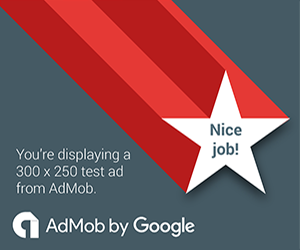Are you a developer building the next great app? Do you wish you could better analyze your app and its users, so you can monetize without compromising the overall user experience? If so, you’re at the right place!
Not only can these questions be addressed simultaneously, but there is already a solution in place: Firebase. Firebase can help you build your app, understand and grow your user base, and link with AdMob to help you better monetize.
Firebase can provide a Realtime Database, Authentication, Cloud Messaging, Storage, Hosting and Crash Reporting to aid you in developing your app. Forget about infrastructure - you can focus on building your masterpiece and leave the operations to Firebase.
At the heart of Firebase is a 100% free analytics solution built specifically mobile apps. With unlimited reporting on up to 500 distinct events, you can set up multiple measurements to know exactly what your users are doing in your app, how they’re engaging with your app, and what they love most about your app. With this data, you can focus your efforts to drill down and sustain the best features of your app, while at the same time improve newly surfaced areas of needs.
After you’ve launched your app, Firebase can help you grow and re-engage users with powerful growth features. Using Firebase Notifications console you can re-engage users, run marketing campaigns, and target messages to Audiences in Firebase Analytics. Dynamic Links can survive the app install process and take users to relevant content whether they're a brand-new user or a longtime customer. There is also the Firebase Invites feature, an out-of-the-box solution for app referrals and sharing, which lets your existing users easily share your app, or their favorite in-app content, via email or SMS. Finally, Firebase can also track your AdWords app installs and report lifetime value to the Firebase Analytics dashboard and Firebase Audiences can also be used in AdWords to re-engage specific groups of users. For example In-app events can be defined as conversions in AdWords, to automatically optimize your ads, including universal app campaigns.
With AdMob by Google, Firebase can also help you monetize your app by linking your Firebase Analytics with monetization. By combining these two products, you gain deep insights into usage data, which you can then use to optimize your user experience and monetize your app. Do your users have trouble progressing past certain levels? Help them progress with Rewarded Video. Are certain users spending all day endlessly scrolling through your content? Help them discover other cool apps with Native Express. Do a few users spend heavily on your IAPs and you want to keep their experience ad free? Segment them with Firebase, and exclude them from the ad experience.
Want to learn more?
Check out the above video, where Andrew Brogden, Mobile Ads Developer Relations and David East, Developer Advocate, walk you through what benefits there are to using AdMob and Firebase together, and how to get your Android and iOS projects set up with both SDKs.
Ready to start exploring the true power of Firebase and AdMob? Sign up for a Firebase account and an AdMob account and link the two accounts.
Stay tuned for our next blog on Firebase in the coming weeks, where we will deep dive even further on user behavior analytics (of which you now have deep insights thanks to Firebase) and how this can help you increase those 5-star reviews!
Until next time, be sure to stay connected on all things AdMob by following our Twitter, LinkedIn and Google+ pages.
Posted by Alex Fan, Business Development Executive, Mobile Partnerships.






